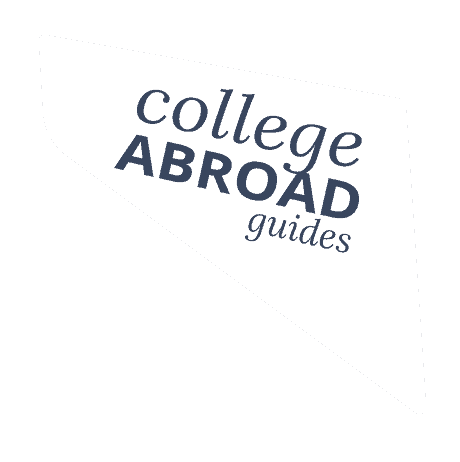Studying Along the Wild Atlantic: What is the University of Galway Like?

- Originally published
- Last updated on July 19th, 2024 at 12:44 pm
Table of Contents
National University of Ireland, Galway is no more. Though the University of Galway is still a constituent university of the National University of Ireland group (along with University College Dublin, Maynooth, and University College Cork) it’s forging a new identity that eliminates confusion for international students and conveys that the University of Galway is, on its own, a juggernaut holding down this windswept outpost, an ideal spot to keep looking past the boundaries of the known. But before or after the name change, what’s the University of Galway like?
We still wondered. So we reached out to some students to dish. What’s the worst part? What are students proud of? What do you wish you knew before you went?
We mixed it up with some of the basics, so you can compare more easily when researching multiple universities. But we also wanted to convey the vibe, so you get a real sense of whether the University of Galway is your place – or just someone else’s dream university.
University of Galway Facts and Figures
Degrees: BA, BSc, BComm, BEng, BCL, MB, BCh, and BAO
Majors: 68 undergraduate courses, but with additional options.
Location: Galway city, Galway county, west-central Ireland
Cost for out-of-EU: €17,360 for humanities and social sciences to €23,140 for science courses and €50,135 for medicine
On-campus housing cost: €3,285 to €7,695 (prices range across the single payment options. Less affluent students will pay more if they need to pay in two installments).
FAFSA Funds: Yes
Abroad from abroad: Yes. Whether you have a passion for literature and history, a fascination with science and technology, or an interest in business and economics, the University of Galway has specific programs tailored to meet your interests. With opportunities for semester exchanges, summer programs, and full-year immersion, students can choose from a wide range of disciplines, allowing them to explore Ireland’s vibrant culture, breathtaking landscapes, and engage with a thriving academic community.
Student body: 19,000 total students, including4,000 international students from 110 countries
Five adjectives: Multicultural, accepting, jovial, laid-back, kind
Student Life out in Galway
Historically, Western Ireland was not desirable. This prejudice reached its apex in the 17th century when British general Oliver Cromwell famously told Irish Catholics they could go west “or go to hell.”
The choices were comparable.
After all, the west coast of Ireland, called the “Wild Atlantic Way,” was chilly, rocky, and unfarmable. Today, these qualities make western Ireland feel romantic and traditional, a bastion of Irish Gaelic culture that caters to students looking for a 3 ½ train ride from Dublin that feels like a world away.
I haven’t liked the weather there because it is so windy and rainy. I can’t blame Galway, though. We are in Ireland and the rainy weather is normal.
Students say it feels different from Dublin, too. While “authentic” and quintessentially Irish, the west coast city is also more casual than its capital city counterpart.
While Galway is much smaller than Dublin, the city has grown into an international city, with 100,000 residents, 15% of which are from outside Ireland (most come from Eastern European and Baltic states like Poland, Latvia, and Lithuania).
What was presciently named the “city of foreigners” by displaced Irish natives kept outside the city by marauding Englishmen, has increasingly come to fruition. Galway, while small, is a burgeoning hub for international work and study in Ireland. Today, the largest city in Western Ireland is comprised of roughly 15% foreign-born residents and 20% students.
It’s so welcoming. I think that’s the culture because I haven’t had a bad experience anywhere I go. Even in the supermarket people try to help me pick the best produce! Galway is so friendly. And there are plenty of clubs and bars that are close by where you can meet friends after class. Galway is easy-going and people go out of their way to make you feel welcome wherever you go.
The university sits just a few blocks north of the center of Galway on the River Corrib where it branches into the Eglington Canal and meanders to the North Sea a few miles south of the university buildings. Stroll north and you’ll come upon the Salthill promenade, ideal for jogging or rollerblading past a series of beaches. You can also hit the fun park for a Ferris wheel ride to take in views of Galway from above.
In spite of some sticker shock in expensive Ireland, you’ll shave a little cash off Dublin prices, especially if you nosh on cheap bagel sandwiches at Ward’s or student-favorite Dough Bros. pizza.
The rest of the city feels as young and vibrant as its student population suggests, with buskers staking out space to sing traditional Irish songs, sometimes with fiddle or accordion accompaniment.
Grab a slice of pizza and enjoy a night out in this safe, but culturally effervescent, city.
Small-scale Galway means students bump into each other no matter where they go, and if you’re not feeling the resident d.j. at one pub, you’ll surely find another just down the road. Galway has a reputation for musicians, theater, and women (Ed Sheeran was not the first to sing about Galway girls). Ultimately, bohemian Galway brings together a variety of people, but once they’re here, the small-scale university town makes it easy for outsiders to fit in.
Galway Campus + Housing
18,000 students live in the heart of the city on and attend NIU Galway. It’s built around a seemingly ancient grey stone quadrangle, with ample green space as students wind their way through newer buildings on their way to classes. While cloistered and impossibly green, and dotted with picnic tables, the campus is just ten minutes from Galway’s city center, full of coffee shops and bars.
There’s a caveat to all this beauty: it can be tough to rent in Galway, as is the case everywhere in Ireland.
There’s an accommodation office at the University of Galway that can help you apply for two student residence halls with school-year rates between €3,285 (if you’re lucky and want to share) and €7,695 (if you’re unlucky or don’t want to share). Students must apply before they’ve even been accepted by the university during a 3-week window (deposits are returned if you are unsuccessful or choose not to attend). A random lottery will determine who gets offered housing, so not all first-years get lucky.
Like many Irish universities, student housing at the University of Galway feels lackluster and impersonal. Goldcrest Village is a stark block of student rooms with half-opening windows, cinderblock hallways, and repetitive keycard gateways, but is newer and more expensive than the alternative. Corrib Village is older but less monolithic, with multiple buildings situated around a lawn. It boasts laundry and a shuttle that can make the journey to campus easier on chilly mornings.
I chose Galway because they had on-campus student accommodation which lots of Irish universities don’t. they also were the only ones with the course that I wanted. but looking back, on-campus student accommodation wasn’t that important to me. There are lots of local rentals and the value is better.
We were so excited to hear about a new dorm for the 2023-2024 academic year, then we saw its brick facade and sighed. Dumlin Village looks like a hospital rehab building in the Midwest (no offense, tan-brick lovers). Rooms with hospital door frames make us long for the days when architects and developers thought about how inhabitants learn and grow best, rather than just how to meet fire codes on the cheap.
But while we’re not hanging up pictures of the dorms on our vision boards, we’re happy the housing crunch is being addressed and students get new, functional digs to call their own for very reasonable prices. The shared accommodation is especially budget-friendly, and the quality of education for the price point is enough to make us almost giddy about those new dorms.
Housing on campus is overly expensive and not that great. It’s much better to look for private student accommodation. Still, it’s a good way to get to know people when you’re a first-year.
All in all, it takes some luck to get a housing offer. International students should contact the housing office before applying, but even so, they don’t guarantee housing. If you’re among the chosen, be sure to use your year in student housing making friends, minimizing the chances that you’ll have to go it alone when you battle the private housing market in future years.
Multiple websites trying to pick up the slack, including AirBnB-style student housing portals. And the International Office will help organize first-year students and guide them toward important steps they’ll need to take, like handling immigration and bank accounts, especially if you’re expecting US student aid deposits.
What is the University of Galway like for Academics? Employability?
With 68 undergraduate programs, Galway is “small” by public university standards in the United States, where state schools regularly offer upwards of 150 or 200 undergraduate degrees.
Instead, you’ll find a more personalized, human-sized experience here.
Both teaching and research are important at this university of the year, especially impressive as the Times singled out Galway for its role in helping its students through the pandemic. Galway has a long history of balancing student needs with international renown. Ranked by the Times in the global top 350 (#34 for impact), the University of Galway has a strong faculty, and the University of Galway has been inspiring minds for a long time.
The university is so international and I love meeting new people from different countries and cultures. The university staff who work at the university are also very friendly and kind. That’s hard to get at a prestigious school where the faculty are always concerned about their own projects and less invested in their students. It’s not like that at Galway.
Degrees include a broad program in “science,” handy for students who want to sample options from botany and mathematics to physics and chemistry before specializing in their final year of the program. A warning: some students won’t be able to continue in a track they find interesting if there’s too much interest and their grades aren’t tops. That can make it hard to choose a university program. You’ll have to decide ahead of time and commit, knowing you might be frozen out of a potential pathway after spending time getting to know it’s right for you.
Other options are more traditional. You can apply for a program in physics right away, for example, even specializing along the way in more focused areas like climate, theoretical, or astrophysics.
I struggle with the fact that I don’t have the option to take modules that don’t strictly apply to my course. But I really enjoy the focus on education and student groups and that there’s no Greek life or big sports stuff like there is in the US.
Marine sciences are a particular strength. Not only is it a field you won’t get anywhere else in Ireland, but you’ll study it at the state-of-the-art Martin Ryan Marine Science Institute with more marine science experts than anywhere else in Ireland. Students get “boat time” in addition to class lectures, and students say they’re able to connect in the small community, working on original research and making connections that lead to job offers.
Galway is a comprehensive research university, not merely a science hub. You can study theater, history, music, psychology, or geology here, too. The university determines what pathways students can pursue through each course. In the first year, students select two elective classes. In their final year, students have bigger choices to make: should they study abroad or pursue a work placement?
Galway has the best job placement rates in Ireland, and that’s probably because they corner the market on Western Irish companies. But the idea of education leading to practical work is embedded in the University of Galway teaching model. 80% of courses at Galway have a work or study abroad component. A work placement may not be optional and starts with students taking part in a work placement “boot camp” where they’ll work on their CVs (resumés) and interviewing skills.
Student Experience while Studying at Galway
Back on campus, the cavernous cafeteria, bar, and tons of cafés serve their purpose. Students prefer grabbing snacks and coffee in the hub. But international food partners run the cafeteria, so it’s no different or worse than you’d find stateside.
Student societies and sports abound, and student services are strong. Overall, the University of Galway is a city experience that leaves the most anonymous aspects of Dublin behind. A homier “large school” alternative, you’ll find plenty of groups and clubs to join to make Galway your own.
For LGBTQIA+ students, Ireland as a whole, and urban Galway in particular, are LGBTQIA-friendly. However, the University of Galway has faced backlash in the past from student societies with allegiances to anti-gay groups and lecturers posting anti-gay sentiments to social media (in one case, the student society was disbanded. In the other, the lecturer faced no consequences). The university does offer a student society to support LGBTQIA+ students, rainbow week makes a campus splash every year, LGBTQIA+ students hold positions within student government, and students generally report feeling safe in this laid-back, arts-oriented city. We asked students how they felt about these incidents, and they unanimously felt Galway was a progressive, welcoming city they would recommend to students.
Want to Apply?
Use the application portal on the University of Galway’s website. It’s straightforward. You can apply to 2 programs for €35. Medicine students go through their own portal, but also apply online directly to the university. SAT scores are almost always required for US students, and submitting one is highly recommended. You’ll also include a transcript, AP scores, and a personal statement of up to 800 words about your interests and how they led you to Galway. Get two letters of recommendation, and consider whether you need to have subject matter coursework in high school to meet the entry requirements for your chosen program.
Rolling applications open October 1 and close July 30.
Don’t procrastinate. It’ll take roughly two months for Ireland to approve your student visa, so you won’t be able to make fall semester coursework unless you plan ahead.
Galway not your Girl?
Take a look at other universities in Ireland. Maynooth is also centered around a gorgeous grey stone quadrangle. Trinity College Dublin also has a historical campus that says “attending classes in castle is the right uni for me.” And if you want to compare prices, take a look at Irish public universities for how they stack up against rising prices. No university is always the right option for everyone; it’s about finding the perfect experience for you.
Related Posts

Jessica Share
Jessica is the writer, Ph.D., and mom-of-an-abroad-student-in-the-UK at the helm of College Abroad Guides. When she's not asking college students where the coolest place to hang out in their city is, she's figuring out how she can make $60 imported Greek oregano potato chips and £50 British bacon potato chips appear on her doorstep for the cost of a local bag of Lay's.





